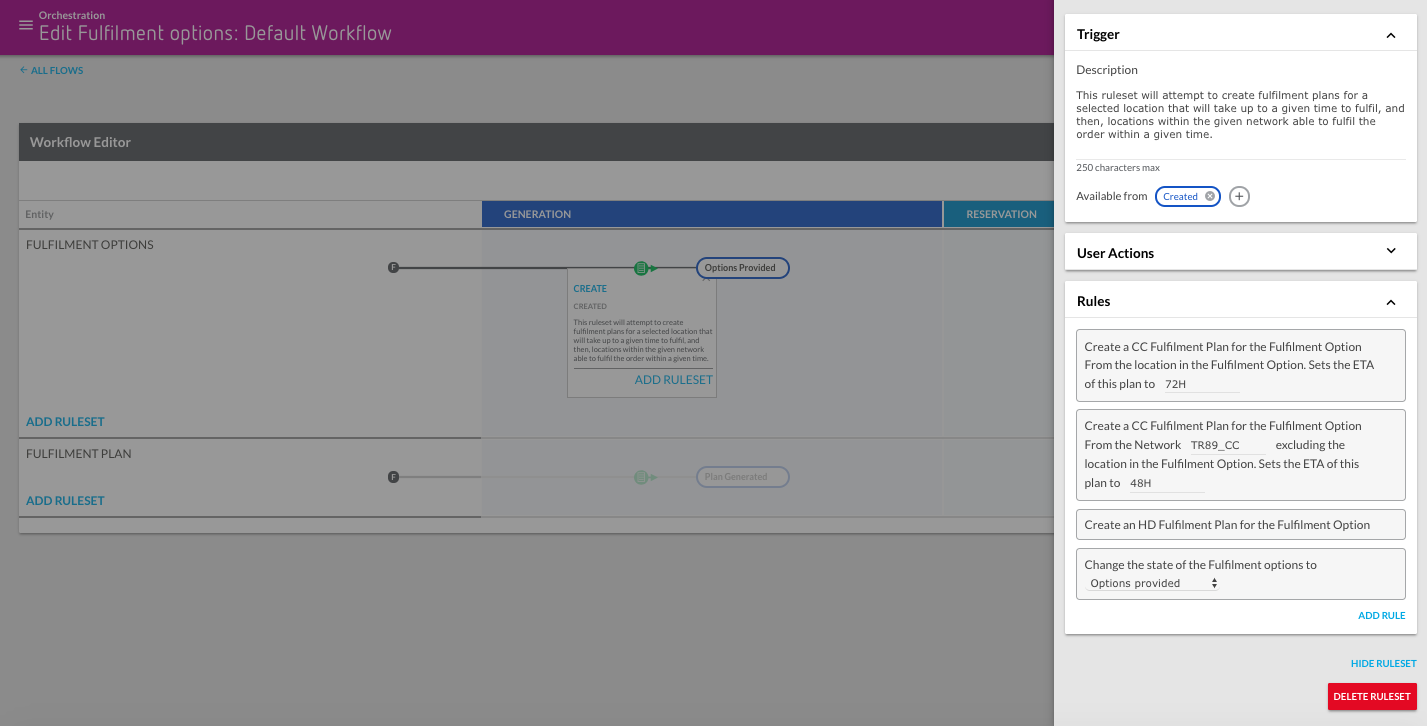Adding a Rule to your Workflow
Author:
Fluent Commerce
Changed on:
30 Jan 2024
Key Points
- Working with Rules
- Adding a Rule via the UI
- Adding a Rule via the Workflow JSON
Steps
 Adding a Rule to your Workflow
Adding a Rule to your Workflow
Working with Rules
Rules are the fundamental building block of Workflows. They are the "Lego pieces" of business logic that can be pieced together in various combinations to achieve the desired outcomes.
Rules in most cases require specific input parameters in order to execute their intended logic. These will be displayed in the UI, or added as
`props`The Rules in a Ruleset will be executed in the order displayed in the UI or appear in the Workflow JSON, from top to bottom.
Adding a Rule via the UI

Opening a Ruleset and clicking the Add Rule button brings up the Rule Library panel on the left of the Ruleset panel. A list of all available Rules is provided, based on which Rule Plugins are installed and Active for the given Account and Workflow.
The Search box enables users to quickly find the Rules they are looking for. It filters the Rule List as you type. The Rule list will only show Rules that support the Ruleset's entity.
Clicking on a Rule within the list will add it to the Ruleset Rules section, in readiness for configuration of required input parameters.
You change the order of the Rules in the Ruleset by drag and drop, however one should take precautions here, since the outcome of a Rule may invoke an Action incompatible with the next Rule.
To remove a Rule, click the Trash Can icon on the right side of the Rule, visible on mouseover.
You can add, change, or remove Rules in this section, as well as use drag and drop to change the order of execution.
Most Rules will provide input areas for their required parameters or configuration. For example, the Change State Rule requires the new Status to be provided, so that the Rule knows what state to change the entity to.
Adding a Rule via the Workflow JSON
Add your Rules to the
`Rule`Rule schema
JSON Key | Value Type | Mandatory | Description |
name | String | YES | Full name of the Rule including the account and plugin name. For example "{{accountName}}.{{pluginName}}.{{ruleName}}" |
props | JSON Object | NO | Props are required for the rule. These differ depending on the values the rule needs to function. See the Rule Library for information about specific Rules and their props. |
Rule sample
1"rules": [
2 {
3 "name": "{{Rule name}}",
4 "props": {}
5 }
6],Language: java
Name: Rule sample
Description:
[Warning: empty required content area]